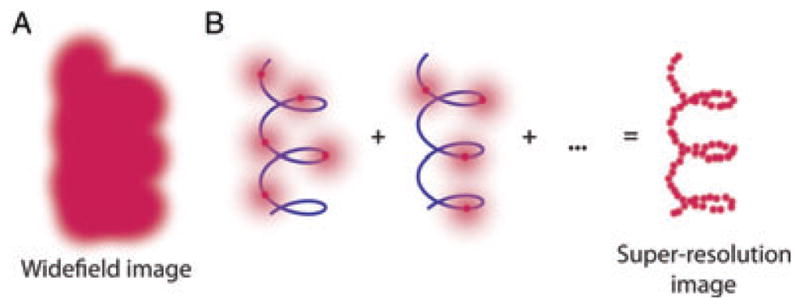Fig. 3.

Schematic showing the key idea of super-resolution imaging of a structure by single-molecule super-localization and active control (SMACM). (A) It is not possible to resolve the underlying structure in a conventional wide-field fluorescence image because the fluorescent labels are in high concentration and the images overlap. (B) Using controllable fluorophores, it is possible by either blinking or photoactivation to guarantee that only a sparse subset of molecules are emitting which then can be localized with nanometre precision (blue line is the underlying structure being sampled). Once the first subset of molecules photobleaches or enters a dark state, another subset can be activated or stochastically turned on and localized. This process is repeated and the resulting localizations summed to give a super-resolution reconstruction of the underlying structure. [Adapted and reproduced by permission from (Thompson et al., 2010); copyright Academic Press.]
